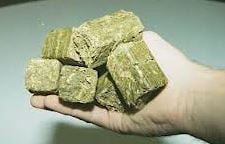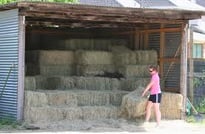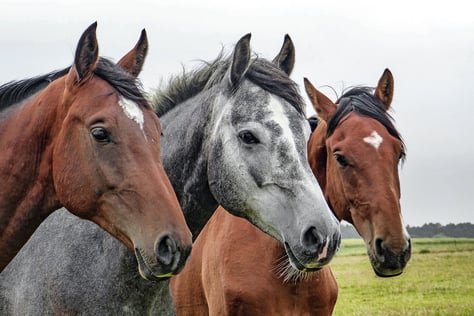 The most basic of feeds for your horse (forage) is sometimes the hardest to find available. Recent high temperatures and little rain, sometimes followed by too much rain, play havoc with farmers and their crops. These crops especially include corn, oats and, most importantly, hay. When a tough growing season hits, horse owners can expect hay prices to rise and continue rising over the next year. Hay may also become scarce and of lower quality.
The most basic of feeds for your horse (forage) is sometimes the hardest to find available. Recent high temperatures and little rain, sometimes followed by too much rain, play havoc with farmers and their crops. These crops especially include corn, oats and, most importantly, hay. When a tough growing season hits, horse owners can expect hay prices to rise and continue rising over the next year. Hay may also become scarce and of lower quality.
Forage hay and pasture is necessary to provide fiber to help keep the horse’s gut health intact. Forage should represent 1.5% to 2% of a horse’s bodyweight in roughage. If hay becomes scarce, a fiber alternative such as beet pulp can be used. Bridgett McIntosh, PhD, assistant professor and horse extension specialist at the University of Tennessee, says beet pulp is widely available and nutritious. "The nutrient content of beet pulp is similar to good quality forage and one pound of beet pulp has the same amount of calories as one pound of oats.”
McIntosh also feels that soybean hulls are another option. A soybean processing by-product, soybean hull pellets have a similar nutrient composition as good quality hay and can be used to replace up to 75% of hay in a horse's diet. She goes on to caution that any changes to your horse’s diet should be made gradually.
Sarah Ralston, VMD, PhD, Dipl. ACVN, associate professor in the Rutgers University Department of Animal Sciences, suggests that horse owners also consider hay-based cubes as an alternate source of forage.
To ensure that your horse is receiving all his daily nutrients that he may have normally obtained from hay or pasture, Carey Williams, PhD, extension specialist in equine management at Rutgers University recommends adding a grain supplement with concentrated levels of protein, vitamins, and minerals. Some “complete feeds” are meant to be fed WITH forage so be sure to check the labels and find one that is a “stand alone” product.
Remember, too, this winter that horses, especially older horses who may not move around as much, use the digestion of hay to help them keep warm. You may want to consider blanketing this winter if forage is in short supply.
In addition, if you keep your horses on pasture, be sure to use good pasture management practices. Routine mowing and harrowing of the pastures to keep pastures nutritious and parasite free are important. Using rotational grazing (moving horses from pasture to pasture when the grass gets overgrazed) will also keep your pastures healthy. Remember to set up a sacrifice area this winter to keep horses from trampling your pasture when it is wet. Hoofs can do a lot of damage to wet ground and next spring you may end up with more weeds than pasture.
Finally, if you find that the quality of hay in your area isn’t what your horse is used to, you may want to consider having your veterinarian do a dental exam and possible teeth floating on your horse. If you end up having to feed your horse more “stemmy” hay, your horse may have difficulty chewing and digesting it and this can lead to colic.
If you find a good supply of hay in your area and have room to store it, it’s not too early to start stockpiling hay for winter feeding. One of the best ways to avoid worrying about having enough hay is to plan ahead.



